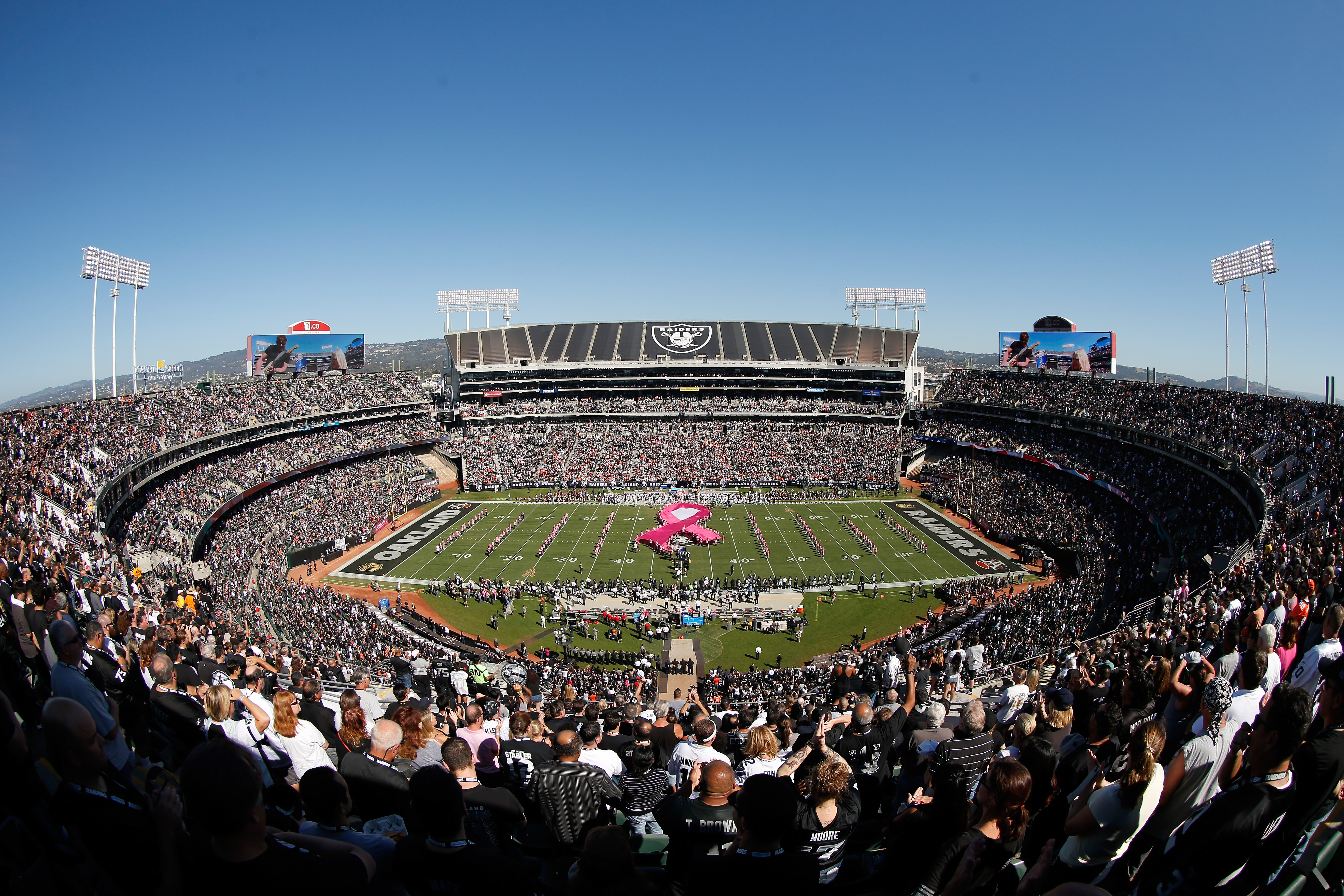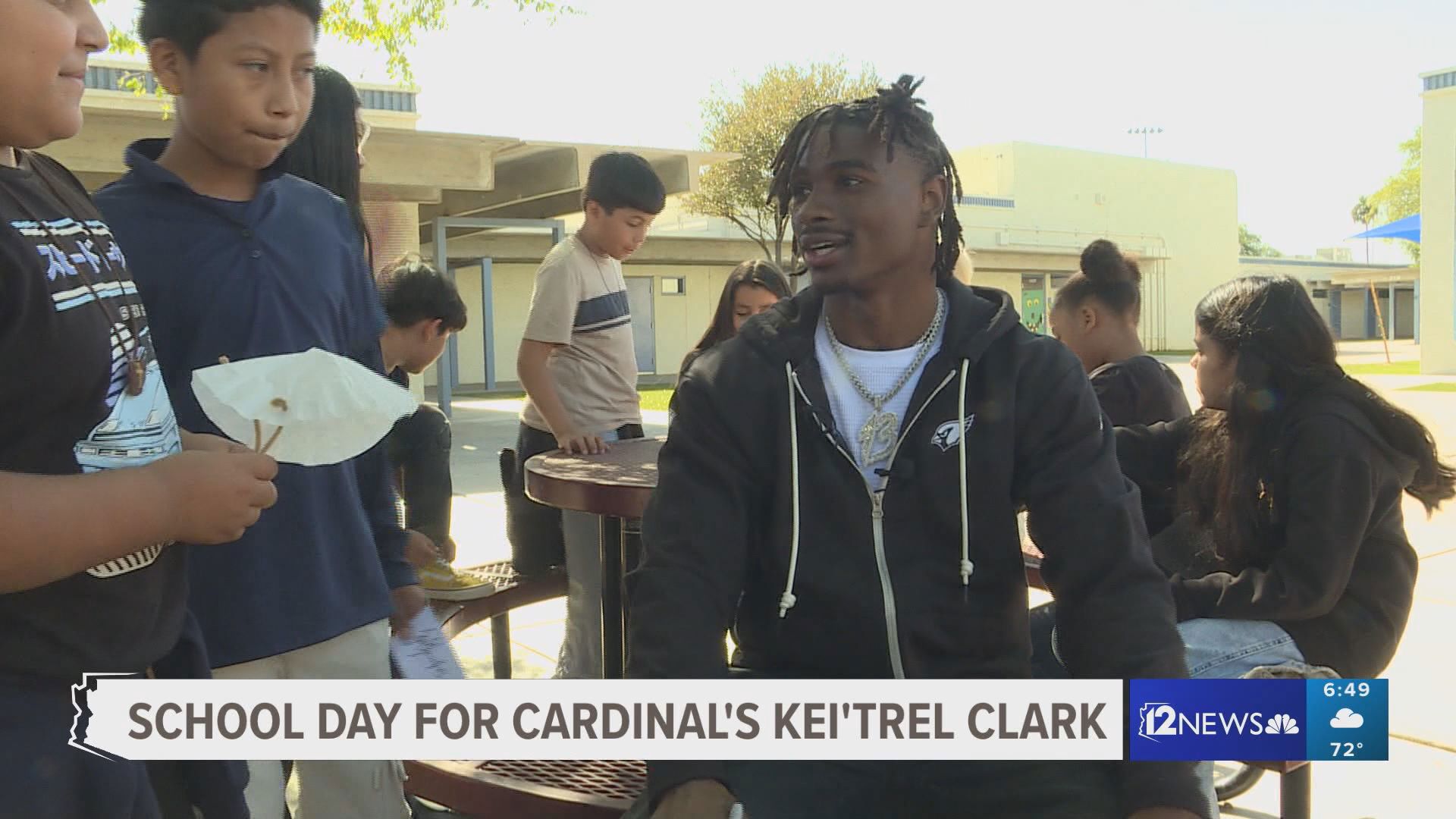Oakland, St. Louis and San Diego all share a heavy burden these days -- and it’s not just the grief of recently losing their NFL teams to other cities.
They also have about $220 million in combined public debt stemming from stadium and facilities construction for those same cut-and-run Raiders, Rams and Chargers. Governments for each market effectively decided to throw public money at them in the 1990s, hoping to lure or keep those teams in town with new or upgraded buildings that cost around $570 million combined.
All three teams are now gone or leaving soon. But that debt load will haunt taxpayers into the next decade. Those old stadiums also will have to be redefined – or possibly torn down – along with a sudden change of identity for each sports town. A breakdown:
In Oakland
The 51-year-old Oakland Coliseum is the last stadium still housing both an NFL and Major League Baseball team, the Raiders and A’s. That will soon change.
The Raiders will play at Coliseum for at least one or two more seasons before moving to a new $1.9 billion domed NFL home in Las Vegas in 2020 – a move that was approved by the NFL on Monday.
In 2019, the NBA’s Golden State Warriors also are scheduled to move across the Bay to a new arena in San Francisco.
That will leave leaves the A’s as the last big-league team in Oakland.
“We’d like to see the Raiders to stay, but it’s not really our choice,” A’s President Dave Kaval told USA TODAY Sports. “We’re just a member of the community like everyone else. We’re going to build our own ballpark in Oakland and open it to great fanfare.”
The team previously had looked at leaving Oakland but committed to stay and is expected to pick a location for a ballpark there later this year. Its lease at the Coliseum runs through 2024.
Kaval calls it a 100-year decision and says the East Bay, which includes Oakland, has the “best fan base in all of professional sports.”
As taxpayers, many of those fans are helping pay about $90 million in debt left on the Coliseum stemming from a $200 million renovation that helped lure the Raiders to move back to Oakland from Los Angeles in 1995. When the Raiders leave, possibly by 2019, the Coliseum’s fall schedule will be opened up for other events such as concerts, said Scott McKibben, executive director of the Oakland-Alameda County Coliseum Authority.
In St. Louis
The city still has its beloved baseball Cardinals and hockey Blues. But taxpayers also still have the former home of the Rams: the old Edward Jones Dome, which has about $85 million left in debt for the city, county and state, according to St. Louis officials.
The dome opened in 1995 at a cost of about $300 million. Twenty-one years later, the Rams left last year for Los Angeles, where they are building a privately financed $2.6 billion stadium to be shared with the relocated San Diego Chargers.
In the NFL’s absence, the dome has done better financially, said Kitty Ratcliffe, the president of the St. Louis Convention & Visitors Commission, which operates the dome. She said the dome lost around $400,000 in a year of Rams games but generally can gain about that much with a single big concert.
Last September, for example, the dome hosted a Beyonce concert that would not have been possible if the Rams were still there. The dome is part of a convention center complex that can host a wide array of events year-round. She said there are no plans to tear it down.
“It’s better for the community overall to be able to use the facility for other events that generate a lot more economic activity,” Ratcliffe told USA TODAY Sports.
A new stadium – for soccer – might help them get over their loss. On April 4, St. Louis voters will decide whether to provide $60 million in public funding to help build a Major League Soccer stadium. If it’s approved, the city might gain an expansion team in the MLS.
“St. Louis never really has been defined by a football team,” Ratcliffe said. “It’s not who we are. It’s one of the many things that citizens in our community enjoyed, but that’s all.”
In San Diego
It is the eighth-largest city in the U.S. but the only city to have lost an NFL team and two NBA teams — the Rockets and Clippers. The departure of the Chargers after 56 years means San Diego also currently is the only metro area to have a Major League Baseball team (the Padres) but no NFL, NBA or NHL counterpart.
And that’s just fine for many residents here, where the beaches, mountains and desert outshine spectator sports. In November, about 56% of San Diego voters rejected a Chargers stadium plan that would have raised taxes on hotel rooms to help pay for a $1.8 billion Chargers’ stadium and convention center downtown.
After the Chargers then decided to leave for Los Angeles, the city of San Diego has been considering the fate of the Chargers’ old home: 50-year-old Qualcomm Stadium, which is owned by the city and has cost around $12 million per year for the city to maintain. San Diego State’s football team and the college football Holiday Bowl have leases to use the stadium through 2018.
“Given the high cost to the city’s operating budget, the city is undergoing review of the financial feasibility of continuing stadium operations beyond that point,” said Craig Gustafson, spokesman for San Diego Mayor Kevin Faulconer.
Those costs are in addition to about $47 million owed on Chargers-related debt that the city is scheduled to pay through 2027, including about $10 million in interest, Gustafson said. In the 1990s, the city had borrowed around $68 million for stadium renovations and Chargers practice facility construction to help keep the team from leaving.
The good news for taxpayers is that the Chargers had to pay the city $12.6 million to break their lease this year in San Diego – money that can be put toward the city’s $4.7 million annual payments on that Chargers-related debt. “That will free up $4.7 million in the budget for other purposes,” Gustafson said.
Meanwhile, given the uncertainty of the old stadium’s future, the Holiday Bowl has explored moving across town to Petco Park, home of the Padres – a facility not designed for football. The Poinsettia Bowl, a lower-tier postseason game, was canceled this year after 12 years.
San Diego State's football team also is seeking a new permanent home, which might be in a new soccer stadium at the old Qualcomm Stadium site – or not. An investment group has proposed redeveloping that site with a privately funded 30,000-seat soccer stadium, with hopes of landing an expansion team in Major League Soccer. The soccer stadium decision might be decided by city council, or voters, later this year.


